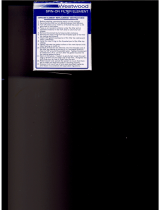
6
Check the air gap between the ignition module and
flywheel magnets. The air gap should be 0.3 mm (0.012
in.). The ignition air gap can be checked using air gap
tool 5025134-02.
If the ignition air gap requires adjustment, first loosen the
ignition module retaining screws. With the flywheel
magnets aligned with the ignition module, insert the air
gap tool between the flywheel and module. Hold the
ignition module against the flywheel and tighten the
module retaining screws. Remove the air gap tool and
recheck for spark. If no spark occurs, replace the ignition
module.
Ignition Module Removal
Disconnect the high tension lead from the spark plug.
Disconnect the short circuit wire at the ignition module.
Remove the ignition module retaining screws and with-
draw the module from the saw.
Ignition Module Installation
Install the ignition module, but do not tighten the screws.
Make sure one of the module screws secures the module
ground wire. Place the air gap tool between the module
and the flywheel magnets. While holding the module
against the flywheel, tighten the module retaining screws.
Remove the air gap tool.




















